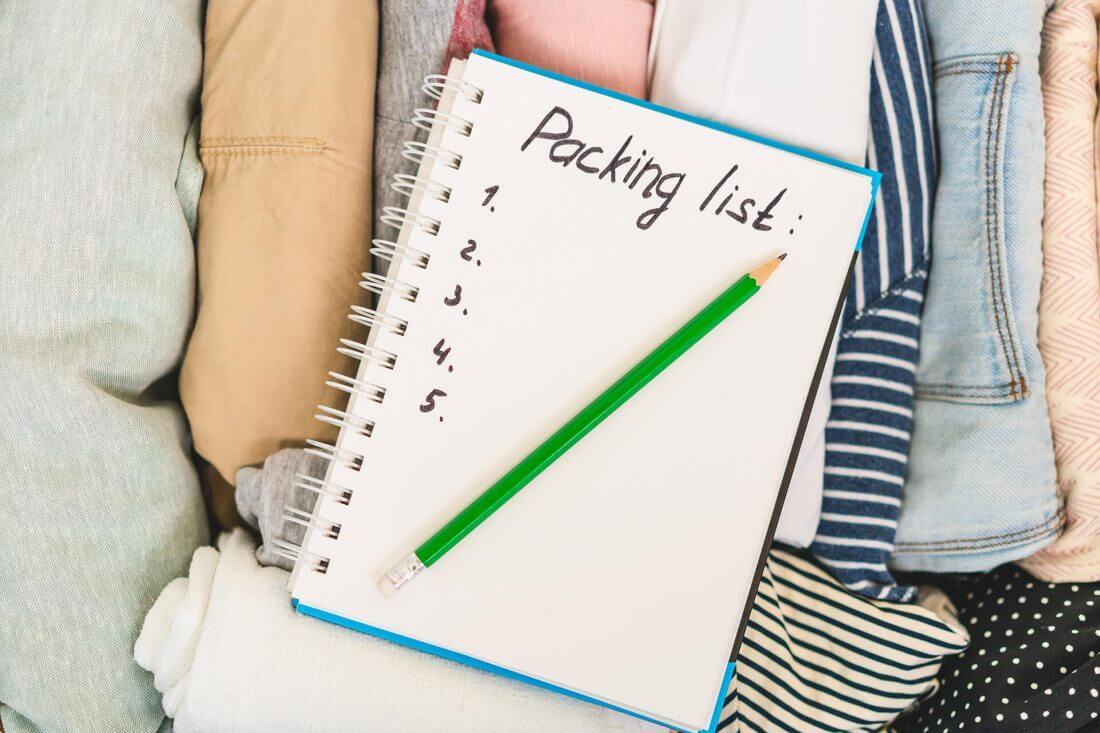When you plan on changing a place of living, it can be a cause for a lot of stress. However, you can overcome at least some of the tension with a good plan. When planning a move, creating a comprehensive moving inventory is a key step that can significantly impact the ease and success of the relocation.


Such a list is more than just a list of items – it’s a detailed document that tracks each belonging, helping you manage the packing, relocation, and unpacking processes efficiently. From ensuring that items are safely transported to assisting in the organization of your new home, a well-crafted and thorough list of belongings is an invaluable tool. Inventory management is the ultimate way to handle relocation organization and have a smooth transition to a new place.
What is a Moving Inventory?
A moving inventory is an ultimate checklist of all items you’re relocating, complete with details about their condition and value. This inventory serves multiple purposes in cross-country moving process streamlining. It keeps the move organized, ensuring you have valuables tracking from start to finish.
For a long-distance moving company, this list is crucial for providing an accurate quote, as it reflects the number and nature of your belongings. Additionally, it’s vital for relocation insurance purposes, offering protection against damage or loss. Creating a moving list of items also encourages decluttering, helping you identify items to get rid of, and making the relocation more streamlined and cost-effective.
The Benefits of Having a Detailed Moving Inventory
We can start by quoting Benjamin Franklin – “For every minute spent in organizing, an hour is earned.” Creating a detailed moving box inventory can significantly streamline the relocation process and minimize the risk of loss or damage. This inventory, a thorough list of all items being moved, plays a crucial role in several aspects of the relocation:
- It provides a clear roadmap of what needs to be packed, moved, and unpacked after the move. It helps in categorizing items and planning their placement in the new location.
- When long-distance movers have a detailed moving-out list of belongings, they can provide more accurate estimates for their cross-country moving services. This is because they can assess the number and type of items to predict the manpower, time, and resources needed for the relocation.
- It acts as a moving checklist during the relocation process. By ticking off inventory boxes as the items are loaded and unloaded, you can quickly identify if something is missing. This level of tracking is particularly important when using long-distance moving services.
- Documenting the condition of items before the relocation allows for a straightforward assessment in case of damage. If an item is damaged during the process, you have a pre-move record to prove its original state, making it easier to file insurance claims and get compensation.
- The process of inventorying belongings can also prompt a much-needed decluttering exercise. As you document each item, you’re encouraged to evaluate its necessity, deciding what to keep and what not. This will reduce the number of items moved and, consequently, the cost.
In a recent survey, relocating was rated as the most stressful life event by more than half of the respondents(57%), higher than having a kid, beginning a new position, or going through a divorce. In essence, a detailed list of items organizes and safeguards the belongings during a move and contributes to cost-effectiveness and peace of mind.


Essential Tools and Materials for Inventory
Certain tools and materials are essential to make the move efficient and effective. Notepads or digital inventory tools like spreadsheet software or dedicated apps are crucial for recording items. These tools offer a convenient way to list and categorize belongings, with digital options for easy updates and backups.
Labels for boxes and markers are also vital, as they help in tagging and identifying items. Additionally, having a camera or smartphone on hand is beneficial for taking photographs of items, especially for documenting their condition and for insurance purposes.
Packing List Creation – Categorizing Belongings
Consider organizing items based on the room they belong to, as this helps in planning an unpacking strategy and setting up a new home quickly. Another effective approach is sorting by item type, grouping similar items like books, kitchenware, or clothing together. For fragile items, categorize them based on their delicacy and need for special handling. This method not only aids in careful packing but also alerts movers to handle these items with extra care.


Documenting Each Item
Documenting each item means you need to be detailed and methodical. Start by writing a clear description of the item, which includes its name, model (if applicable), size, and any distinctive features. Note whether it’s a fragile item or perhaps bulky furniture. This makes identification easier during unpacking.
Next, assess and record the condition of the item. Be honest and precise – note any existing scratches, dents, or defects. This information is vital, especially for insurance purposes, in case any disputes or damage claims arise during the move.
Photographing Your Belongings
Photographs are a vital complement to the list of items, offering a visual snapshot of each item’s condition. These images enhance the written descriptions, making it easier to prove the state of belongings in case of damage or loss. Additionally, photos can help in the unpacking process, allowing you to quickly identify items and recall their previous arrangement.


Keeping the Inventory Updated
To ensure that the list of items remains useful, regularly update it, especially after packing or decluttering sessions.
As you pack and later unpack, cross-reference items with the list, adjusting for any changes in condition or decisions to discard items.
Stay flexible to accommodate the unpredictability of relocating.
Utilizing Digital Tools for Inventory Management
Digital tools like spreadsheet programs (for instance, Microsoft Excel and Google Sheets) and dedicated apps greatly simplify the process of managing the list of items. Spreadsheets offer flexibility for detailed lists and photo links, while specialized apps provide specialized features like barcode scanning and room-by-room organization. Additionally, using cloud storage services ensures the list of items is accessible and up-to-date across all devices.


Streamlining Packing With the Inventory
Using a list of items to organize and prioritize packing can significantly streamline the process. Begin by categorizing items based on their usage frequency. Pack non-essential items first, such as out-of-season clothing and rarely used kitchen items. This approach leaves everyday items available until closer to the long-distance moving day.
A list also helps in determining the right packing materials for different types of items. Fragile items you have listed should be packed with extra care and protective materials, while sturdy items may need less padding.
Efficient Unpacking Using Inventory List
This list can guide you in labeling all sizes of boxes, making it easier to identify which ones to open first when the time for unpacking comes. This careful labeling ensures that the most necessary items are readily available right after you move in, streamlining both the packing process and subsequent settling in.
Moving Services
Treat yourself with a white glove long distance moving service that’s based on the inventory list and not weight. This means a price guarantee, transparent move costs and premium moving service.
Learn moreAuto Transport
Move your car across the country in an open or enclosed trailer – for an affordable fee. We offer car transport as a standalone service, but you can bundle it with your household move and get a hefty discount.
Learn moreStorage Services
Our spacious climate-controlled units will protect your things until the drop-off. No need to worry about them because all items are labeled and secure, and each customer gets a dedicated unit mixup isn’t possible.
Learn moreHandling Valuables and Fragile Items
When it comes to handling valuable and delicate belongings, it’s important to document them with detailed descriptions, including unique features and serial numbers. Take photographs from various angles to record their condition for insurance purposes. For high-value items like jewelry or important documents, carry them personally during the move for safety. Clearly mark the fragility of delicate items like packed glassware or antiques in the packing plan, ensuring they receive special attention and care to prevent damage.
Inventory for Insurance Purposes
So, why is relocation record-keeping a thing? A well-documented items list is essential for insurance claims in case of loss or damage during a relocation. It provides clear evidence for insurers if you need to file a claim. In case of loss or damage, refer to it to quickly identify and substantiate the affected items with the insurance provider. This documentation makes it easier to receive fair compensation for any mishaps during relocation.


Will Moving Inventory Help Movers?
This document helps you stay organized and protected during the whole course of the relocation. But it also enables cross-country movers to provide more efficient and tailored packing services. It’s highly beneficial for them for several reasons.
Planning and Resource Allocation
It provides them with a clear understanding of the scope of the relocation, including the number and types of items they’ll be handling. This information helps movers plan for the appropriate amount of labor, different packing materials, and the size of the truck needed.
Special Handling Awareness
Additionally, this document allows movers to identify any items that require special handling, such as fragile pieces or valuables. Knowing this in advance helps them prepare to pack and move them safely.
Efficiency in Relocation Operations
Finally, it can streamline the relocation process. Movers can use it as a checklist to ensure that all items are accounted for at both the origin and destination, reducing the likelihood of items being misplaced or left behind.
Create a List of Items and Relocate With Ease
Creating and using a thorough list of items is a crucial step in ensuring a smooth and efficient relocation process. It aids in organizing belongings, prioritizing items for packing, and ensuring that valuable and fragile items receive the care they need. A detailed inventory, complete with descriptions, photographs, and condition assessments, is invaluable for insurance purposes, helping to streamline any claims for loss or damage.
Moreover, a well-prepared inventory can significantly assist professional movers like Long Distance USA Movers. It provides them with essential information to plan resources effectively, handle the belongings with the appropriate care, and ensure that every item is accounted for throughout the move.


Long Distance USA Movers Make the Process Stress-Free
We encourage you to contact us and employ the expertise of Long Distance USA Movers alongside the organized inventory. Our experienced team will use it to tailor our services to your specific needs, ensuring a seamless and stress-free move. With our professional assistance and your thorough preparation, the relocation experience is bound to be successful and worry-free. Trust Long Distance USA Movers to make your next move a smooth journey.
How Detailed Should My Moving Inventory Be?
It should be as detailed as possible. Include the name, description, condition, and photo of each item. For electronics or high-value items, note serial numbers and model details.
What are the Best Practices for Labeling Items in the Inventory?
Label items by category, room, and condition. Use color-coded labels or specific tags for easy identification, especially for fragile or valuable items.
How Often Should I Update My Moving Inventory?
Update the document regularly, especially after major packing sessions or if there are changes. This ensures your list remains accurate throughout the relocation process.
Can a Moving Inventory Help With Unpacking and Organizing in My New Home?
Yes, it can greatly assist in unpacking and organizing. Use it to track which boxes go in which rooms and to prioritize unpacking based on need and item usage.
What Tools or Apps are Recommended for Creating a Digital Moving Inventory?
Recommended tools for inventorying belongings digitally include spreadsheet programs like Google Sheets or Excel and dedicated inventory apps such as Sortly.
How Can a Moving Inventory Help in Case of Lost or Damaged Items?
A detailed list is crucial in the event of lost or damaged items. It provides evidence for insurance claims and helps in verifying if something is missing or damaged.
How Can I Use My Inventory to Streamline the Relocation Process?
Use the list to schedule packing, identify items needing special handling, and prioritize unpacking. This helps in allocating resources and making the relocation process more efficient.
What Should I Do if I Find Discrepancies Between My Inventory and Actual Items During Unpacking?
If discrepancies arise during unpacking, refer to the list of items and photos to verify the conditions and presence of items. If items are missing or damaged, this documentation will support any claims.
Are There Items That are Often Overlooked When Creating a Moving Inventory?
Often overlooked items include small valuables, personal documents, items in storage areas (like attics or basements), and everyday items that are used up until the relocation day.







